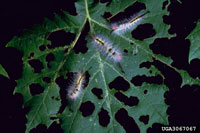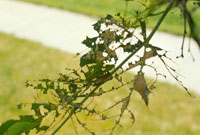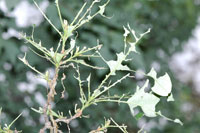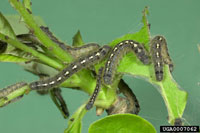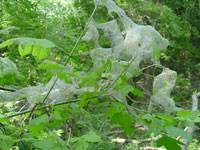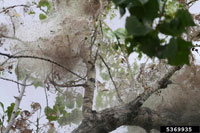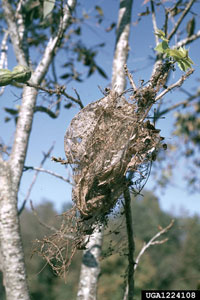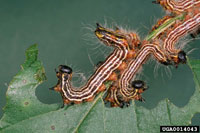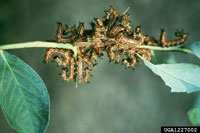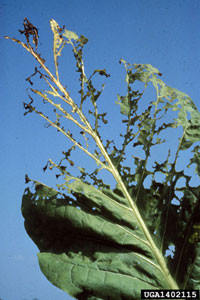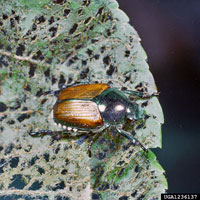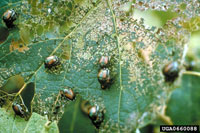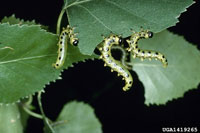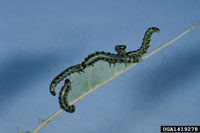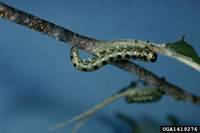Extension > Garden > Diagnose a problem > What's wrong with my plant? > Deciduous Trees > Birch > Parts of leaves missing
Birch > Leaves > Parts of leaves missing
1 of 6
Whitemarked tussock moth
Orgyia leucostigma
- Young larvae windowpane feed (i.e. feed on one layer of leaf tissue between veins) giving them a lacelike appearance
- Older larvae consume entire leaves except the midrib and large veins; significant defoliation can occur
- Caterpillars have a red-orange head with two sets of black tufts near the head; yellowish hairy body with distinct tufts of hair resembling a toothbrush on top of the body
- Full grown larvae are 1 ¼ inches long
- Two generations are present each year; the first from May to June and a second from August to September
- More information on Whitemarked tussock moth
2 of 6
Forest tent caterpillar
Malacosoma disstria
- Larvae chew entire sections of leaves, sometimes leaving some major veins; defoliation can be severe when populations are high
- Blue and black with characteristic footprint shaped white markings on top of body
- Damage occurs May and June
- More information on Forest tent caterpillar
3 of 6
Fall webworm
Hyphantria cunea
- Chews entire sections of leaves, leaving major veins and can defoliate trees in high infestations
- Produces silken webbing that covers the ends of branches; silken tent filled with frass and leaf segments
- Yellowish or greenish with long, fine white hairs with two rows of black spots down its back; approx. 1 inch long when fully grown
- Damage occurs from late July through September
- More information on Fall webworm
4 of 6
Yellownecked caterpillar
Datana minnistra
- Young larvae feed in groups and skeletonize leaves by eating the leaf tissue and leaving the veins.
- As larvae mature, they become solitary feeders and eventually eat the entire leaf.
- Larvae are active from late July through early September.
- They have black heads with striped body covered with fine white hairs and a bright yellow spot behind the head.
- More information on Yellownecked caterpillar
5 of 6
Japanese beetle
Popillia japonica
- Skeletonizes leaves, i.e. chews leaf tissue between the veins creating a lacelike appearance
- Adults are metallic green; bronze wings; white tufts of "hair" along their sides
- Beetles present as early as late June and are active through September
- Feeds on 100's of different plant species, including gray birch
- More information on Japanese beetle
6 of 6
Dusky birch sawfly
Croesus latitarsus
- Consume leaves as they feed on the leaf margins; larvae feed in groups
- Fully-developed larvae have black heads with a yellowish or greenish body
- Preferred hosts are gray birch
- More information on Dusky birch sawfly



